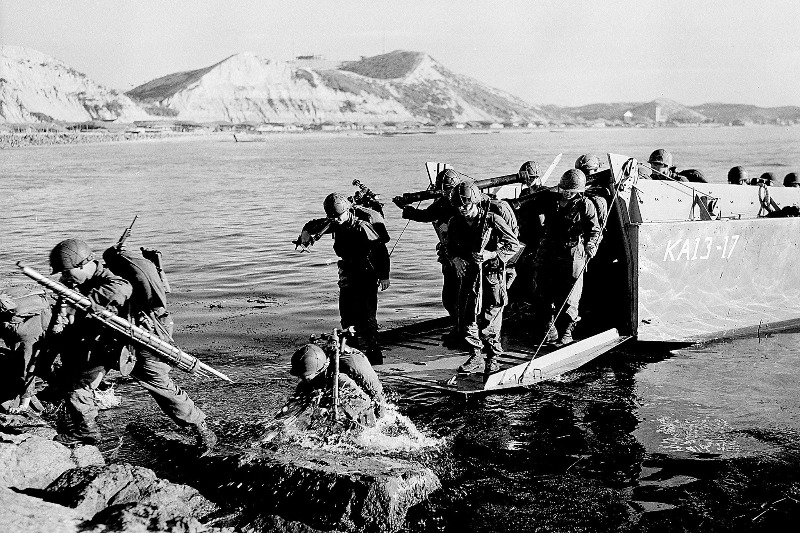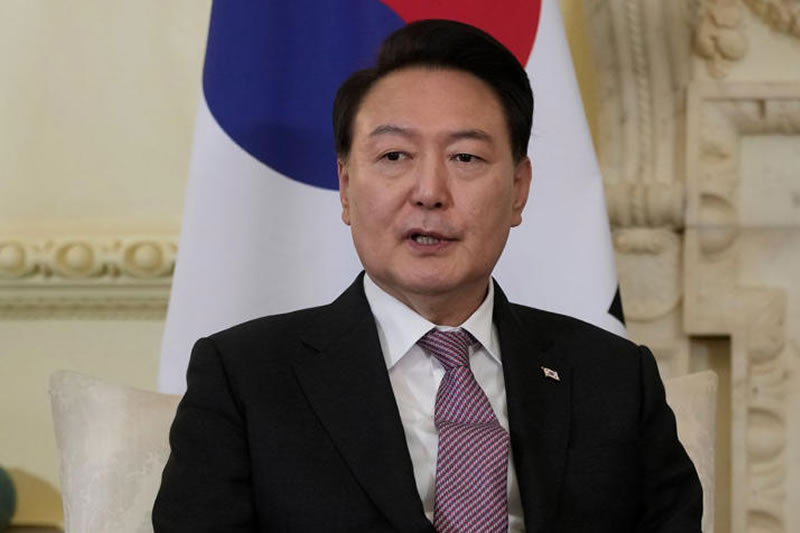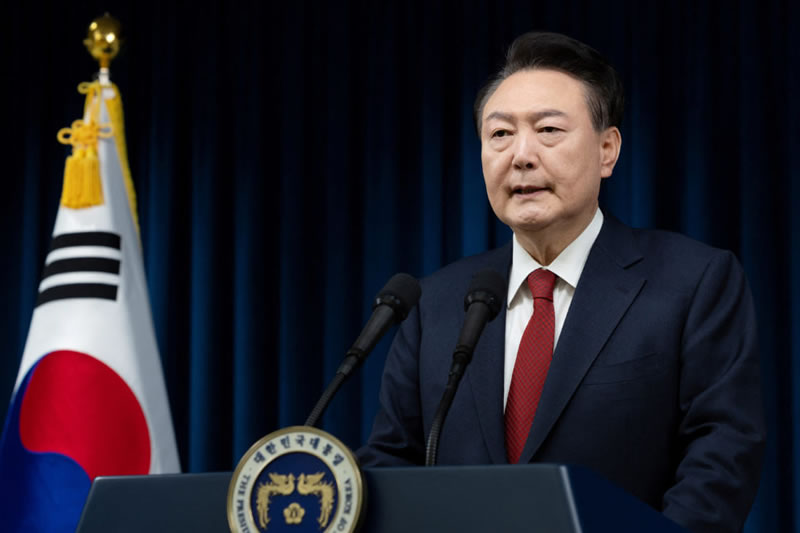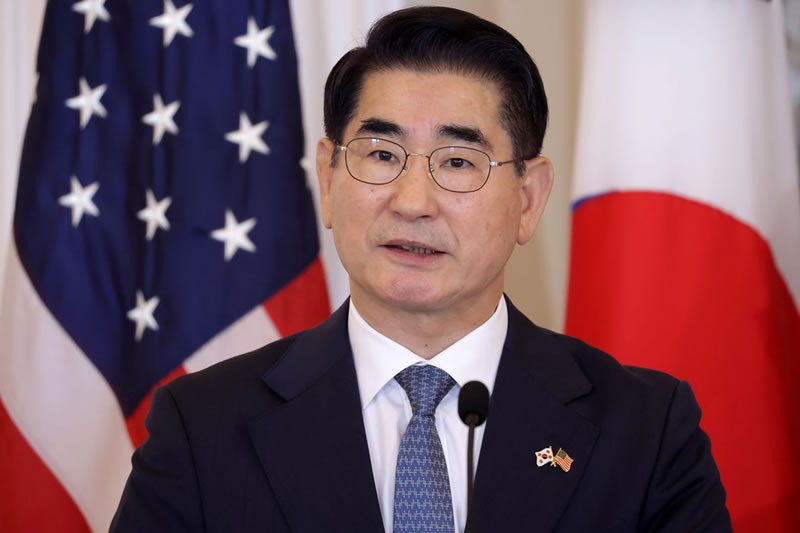
How the civil war shape South Korean politics
Both Pyongyang and Seoul were profoundly affected by North Korea’s attempt to reunify the Korean peninsula by absorbing South Korea during the Korean War (1950-53) in the 1950s. Up north, the Kim family’s cult of personality created a security state, but in the south, it helped shape political forces that can still be felt almost seven decades after the guns fell silent.
Park Chung Hee’s May 1961 coup, which unleashed three decades of quasi-civilian military rule after the Korean War, was made possible in large part by the economic devastation that followed the conflict in Korea.
Between 1948 and 1960 the Rhee government brought nothing but chaos and gross corruption as Japanese industries from the Colonial era were sold at throwaway prices to the erstwhile Yangban elite who had collaborated with the Japanese regime and then Rhee. This was in addition to two rounds of land reform. The gap between the rich and the poor in terms of wealth widened dramatically. In addition to being the poorest country in the world, many people saw South Korea as a lawless “failed” state with a nonexistent government. To add insult to injury, North Korea refuses to recognize South Korea as a partner to any multilateral talks on reunification because Seoul was not a signatory of the Panmunjom armistice signed in 1953, which ended the Korean War.
The Rhee regime’s use of brute force sparked the April Revolution of 1960, which resulted in Rhee’s departure from the country. However, during Chang Myon’s Second Republic (April 1960-May 1961), the chaotic conditions that eventually led to the Park coup were not adequately addressed.
South Korea’s security situation was exacerbated even worse as a result of the conflict. A new quasi-civilian military rule was able to establish itself more solidly thanks to an increase in police and military presence precipitated by the War. However, a soft spot for the military institution continues to dominate public discourse despite the fact that the military has returned to its barracks since the establishment of the Sixth Republic (1987-Present) with no political interference, and evading military conscription is not welcomed favorably.
Gender-based socioeconomic and political implications were also a result of the war. Military duty and hard work have been expected of males since Park Chung Hee’s regime, and this has resulted in a militarized masculinity that has benefited men throughout history. As a result of this ideology, the Confucian patriarchy and gender morality existing in Korean society were reshaped and increased. Women were supposed to support males in their economic and military obligations as “dutiful daughters, obedient wives, and wise mothers.” The participation of women in the democratic struggle against the military regime was limited to non-combatant, helping roles for the males who led the demonstrations. According to the Gender Gap Report, women’s workforce participation in South Korea remains low.
Related Posts
Constantly looming threat of North Korean invasion, both actual and perceived, persisted throughout much of South Korean political history as a result of the War’s aftermath.
So-called “enemies of the state” labeled North Korea due to several acts of kidnapping, espionage and border warfare.
As a result of the harsh attacks on those with Communist sympathies, the National Security Law of 1948 severely restricted intellectual freedom in South Korean politics.
In the Park Chung-case, the Rhee dictatorship carried out widespread arrests on the presumption that they were sympathetic to communism or North Korea. The Park and Chun regimes saw an even greater increase in this. As a result, the ideological spectrum is limited to far-right conservatism to liberal progressivism because Communism is still illegal and forbidden. South Koreans are prohibited from publicly applauding the North Korean regime due to the National Security Law. Nevertheless, the National Security Law has not been without its critics.
When the Uri Party attempted to repeal the law in 2004, it was met with fierce opposition from the ultraconservative Grand National Party. In a 2015 ruling against the leader of the United Progressive Party, Lee Seok-ki, the Supreme Court sided with the Law. The Conservatives label any politician who thinks about bringing social policies or repairing relations with North Korea as a ‘Communist’ and a ‘North Korean sympathizer’.
All other institutions, including those of the Legislature and the Judiciary, were left with their autonomy only in ink because of post-Korean War security concerns.
Even before Park Chung Hee and Chun Doo Hwan’s military rule, Rhee’s Liberal Party dominated every aspect of political society, from appointments to accountability, rendering formal institutions of governance threadbare. However, the military rule of Park Chung Hee and Chun Doo Hwan further tampered and tweaked democratic institutions to suit their purposes. However unpopular she was, Park lacked Rhee’s ability to captivate voters the way Rhee did. By breaking this façade, Park reigned first in the Third Republic (1963-1972) with his own Democratic Republican Party dominating other shell opposition groups, and then by annulling all political institutions other than the Executive through the Yushin Constitution of 1972, in order to mend this Through his Democratic Justice Party, Chun, too, resorted to the tactic of hiding behind a fictitious democracy. Even after the country’s democratic transition in 1987, the constitution still favors the executive branch, giving the South Korean president the second-highest level of power in Asia.
In addition to creating an authoritarian party system, executive control and fake political parties made opposition parties very vulnerable. As a result of the ban on political activity imposed in the name of national security, South Korea has never had any seasoned career politicians. This political immaturity is also visible in frequent cases of violence in the legislature or rushing through bills by circumventing the procedure.
A well-functioning welfare economy in Pyongyang pulled Seoul further and further behind, depriving it of the credibility to claim to be the only government representing the Korean Peninsula. As a result, catching up to the North’s economic progress was not only important to regain legitimacy, but also to provide security.
Park’s Developmental state model focused solely on the development of a strong state-supported capitalist class known as Chaebols who quickly developed monopoly networks and flourished on state concessions, beginning to yield enormous political influence by funding elections in order to achieve this as quickly as possible. When it came to the poor working class, the government did little but look the other way. President Roh Tae Woo’s organization of capitalists into a management federation, giving them considerable powers in resolving labor issues while restricting the unionization of the working class, shows that this approach persisted even after democratisation.
Another aspect of the post-war Developmental state was the suppression of labor demands since they were perceived to have communist tendencies and sympathies for Pyongyang. Growth slowed at the end of the 1960s, and many enterprises went out of business. Several atomized protests were spurred by massive bailouts to save the faltering Chaebols, which caused salary freezes and delays in payments. In 1970, Chun Tai Il, a young worker, took his own life because he was denied government intervention in matters of labor law infringements, which fueled a wave of anti-government protests. This was a watershed moment in the history of the labor movement, as the episode galvanized a number of students, intellectuals, and religious leaders to join forces in the fight for democracy and union rights. When the people rebelled, the State responded with ruthless repression, which it was able to sustain.
Capitalism is so ingrained in the Developmental state that even politicians with welfare ideas like Kim Dae Jung and Moon Jae-in have failed to execute them, resulting in labor suppression. For a large segment of South Korea’s people, Chaebols represent the ‘Miracle on the Han river,‘ the astonishing economic ascent that has been termed, and they are seen as a key player in the country’s economic recovery.
Welfare safety nets and labor reforms in South Korea have not improved in recent years.
Another effect of the War is the rise of ethnic nationalism and severe groupism during the Park dictatorship, which aimed to unify South Koreans with divergent interests into a single entity. The state building process post division did not simply demand time but also allegiance to the ruler. In order to keep the people of the north from being drawn in by the growth of the economy, Park stoked race and community-centric ultranationalism, emphasizing Korea’s status as a single race nation. This ideology targeted primary education in particular because children’s personalities are malleable and can be easily shaped.
As many incidents of racial prejudice demonstrate, South Koreans have a more favorable attitude of ethnic Koreans living overseas than of foreigners in Korea. Even though the attack was widely seen as an act of personal violence unrelated to Cho Seung hui’s Korean heritage, South Korean President Roh Moo hyun apologized for his country’s role in it.
Interracial marriages and their offspring are seen as a danger to the cultural homogeneity of the nation and are not seen favorably. Marriages between Korean men and women from other countries have broadened the demographics of South Korean society, but foreign wives of Korean husbands face pressure from their in-laws to integrate into Korean culture and learn the language.
South Korea’s foreign policy had always been pro-American since its independence in 1948, but the Korean War bolstered the alliance due to security concerns. While Beijing and Pyongyang were well aware of the threat posed by the Communist linkage, Washington changed its strategy to include mutual military aid and the inclusion of Taiwan and Japan under the American nuclear umbrella in an unprecedented show of support for Asia-Pacific allies.
Relations with China, which fought alongside Pyongyang throughout the Korean War, have also deteriorated as a result of the conflict. Seoul grew to view Beijing’s boast that it is as near to Pyongyang as “lips” are to “teeth” as a huge security risk. When it came to Mao Zedong’s frequent criticisms about South Korea’s proximity to the United States, China was just as concerned. As part of South Korean President Roh Tae Woo’s Nordpolitik, formal diplomatic links between the two countries were established in 1992. Relationships, on the other hand, remain tense.
However, despite the efforts of liberal and progressive politicians like former President Moon Jae-in, South Korea remains firmly bound to the United States despite the efforts of liberal and progressive politicians.
Not only does the Korean War live on in the minds of South Koreans, but its effects can be seen and felt in the country’s political dynamics, which were profoundly affected by the war’s aftermath.




